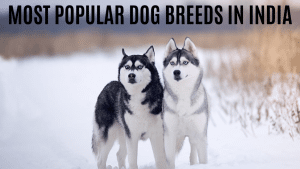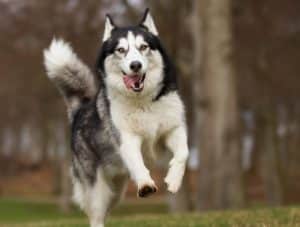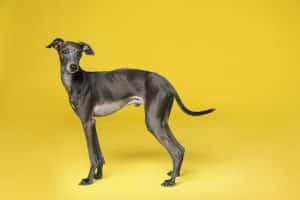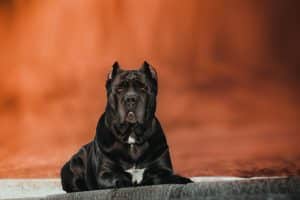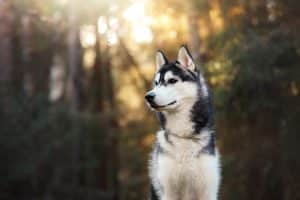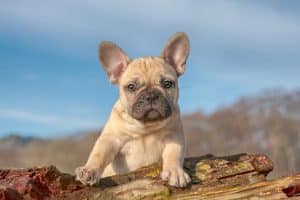Did you ever witness a dog breed that is so unfamiliar looking that made you think what it was? Well, these are the world’s rarest dog breeds. Besides naturally remarkable mixed-dog breed, a few rarest dog breed is not often seen as family pets.
Some of these rare dog breeds are relatively high-maintenance, thus, people often choose easier dog breeds over a rare dog breed. However, if you are interested in having a rear dog breed then follow this article to know more about only dog breed(s) that are the rarest breeds in the world.
Here’s a breakdown of the information about rare dog breeds, along with key takeaways:
Unique and Uncommon: Exploring the World’s Rarest Dog Breeds
Rare dog breeds offer a glimpse into the diverse world of canines, with distinctive histories, appearances, and temperaments. Here’s a summary of the breeds mentioned and what makes them special:
- Tibetan Mastiff: Ancient breed from China, bred for protection. Needs experienced owners due to size and guarding instincts.
- Norwegian Lundehund: Bred specifically for puffin hunting, they have incredible flexibility with extra toes. Playful and energetic.
- New Guinea Singing Dog: Wild dogs with unique vocalizations. Primarily found in zoos and conservation efforts.
- Czechoslovakian Wolfdog: A wolf-German Shepherd hybrid, bred for service work. Requires strong, knowledgeable owners.
- Chinese Crested: Primarily hairless, needs specialized skin care and warm environments. Friendly and playful.
- Leonberger: Large, gentle family dogs with impressive appearance. Require space and don’t tolerate heat well.
- Thai Ridgeback: Ancient hunting and protection breed. Independent and loyal, they thrive in warm climates.
- American Dingo (Carolinian Dog): Naturally-occurring breed resembling Australian Dingo. Strong hunting instincts, not ideal for typical pet homes.
- Bergamasco Shepherd Dog: Ancient Italian herding breed with a distinctive corded coat. Known for their intelligence and protective instincts.
- Biewer Terrier: Tri-color, toy terrier breed closely related to the Yorkshire Terrier. Playful, affectionate, and surprisingly athletic.
Key Takeaways
- Rarity Means Responsibility: Less common breeds often come with specialized needs. Do thorough research before welcoming one into your home.
- Not for Everyone: Some rare breeds are best suited for experienced dog owners due to size, instincts, or independent nature.
- Temperaments Vary: Like any group of dogs, personalities differ between rare breeds. Find one matching your lifestyle.
- Commitment to Care: Certain rare breeds may need unique grooming, diets, or living conditions. Be prepared.
- Where to Find Them: Finding reliable breeders of rare dogs can be challenging. Start with kennel clubs or breed-specific organizations.
Before Choosing a Rare Breed
- Are you ready for a challenge? Some of these dogs have strong personalities or demanding needs.
- Can you provide the right environment? Large breeds, those unsuited to heat, etc., need specific living spaces.
- Think long-term: Are you prepared for the commitment over the dog’s lifespan?
If you’re passionate, knowledgeable, and ready for a unique companion, a rare dog breed might be the perfect fit!
What Breeds Are Rare Dogs Breed?
Rare dog breeds mean that unique dog breeds are not usually seen. These dog breeds were initially bred by mixing different dog breeds to get a dog breed that comes with everything. They were mainly bred for purposes like athletic dogs, hunting dogs, guard dogs, and herding dogs, but not to be great family pets.
Some of the rare breeds in the world are the
Here’s the list of dog breeds numbered 1 through 23, with “and so many more” at the end to acknowledge the vast number of breeds:
- Tibetan Mastiff
- Lagotto Romagnolo
- Xoloitzcuintli (Mexican Hairless Dog)
- New Guinea Singing Dog
- Norwegian Lundehund
- Bedlington Terrier
- Estrela Mountain Dog
- Biewer Terrier
- Canaan Dog
- Cesky Terrier
- Dinmont Terrier
- Dandie Dinmont Terrier
- Peruvian Inca Orchid
- Skye Terrier
- Belgian Sheepdog
- English Foxhound
- Thai Ridgeback
- Catahoula Leopard Dog
- Pyrenean Shepherd
- Teddy Roosevelt Terrier
- West African Sighthound
- Polish Lowland Sheepdog
- And so many more!
List Of Top Rare Dogs Breed
Here are the top 10 best rare dog breeds…
Tibetan mastiff
- Origin Country: China
- Conditions of detention: private house with constant access to the local area
- Specialization: protection of the territory
- Lifespan: 12-15 years
The Tibetan Mastiff is one of the oldest breeds of dogs to protect the home and life of the owner. The first mention of the Tibetan Mastiff can be traced back to antiquity. But despite the centuries-old history and worldwide recognition, the breed remains rare, and in some regions even exclusive.
The Tibetan Mastiff needs an owner with the skill to work with dogs of large native breeds. After all, raising and training an animal is not at all easy: a pet can defiantly skip commands, gnaw on clothes and furniture, and show dominance.
Such behavior is breed-forming. Although it is still possible to correct some habits. Especially if you walk the dog up to 3-4 times a day, constantly changing routes and giving sufficient physical and mental stress. “Tibetans” mature only 3 years, so puppy enthusiasm, despite their awesome appearance and gigantic size, they will have a lot, and energy needs to be thrown out all the time.
You can engage in socialization as early as 1.5 months. The Tibetan Mastiff should be around people and other animals. The enclosure will make the dog wild and poorly managed.
It is also necessary to invite guests from the house from childhood. The dog should get used to loud voices and new smells. Otherwise, any arrival of strangers will be perceived as a threat, and the animal will become dangerous for anyone who crosses the border of the area entrusted to him, even accompanied by the owner.
Norwegian Lundehund
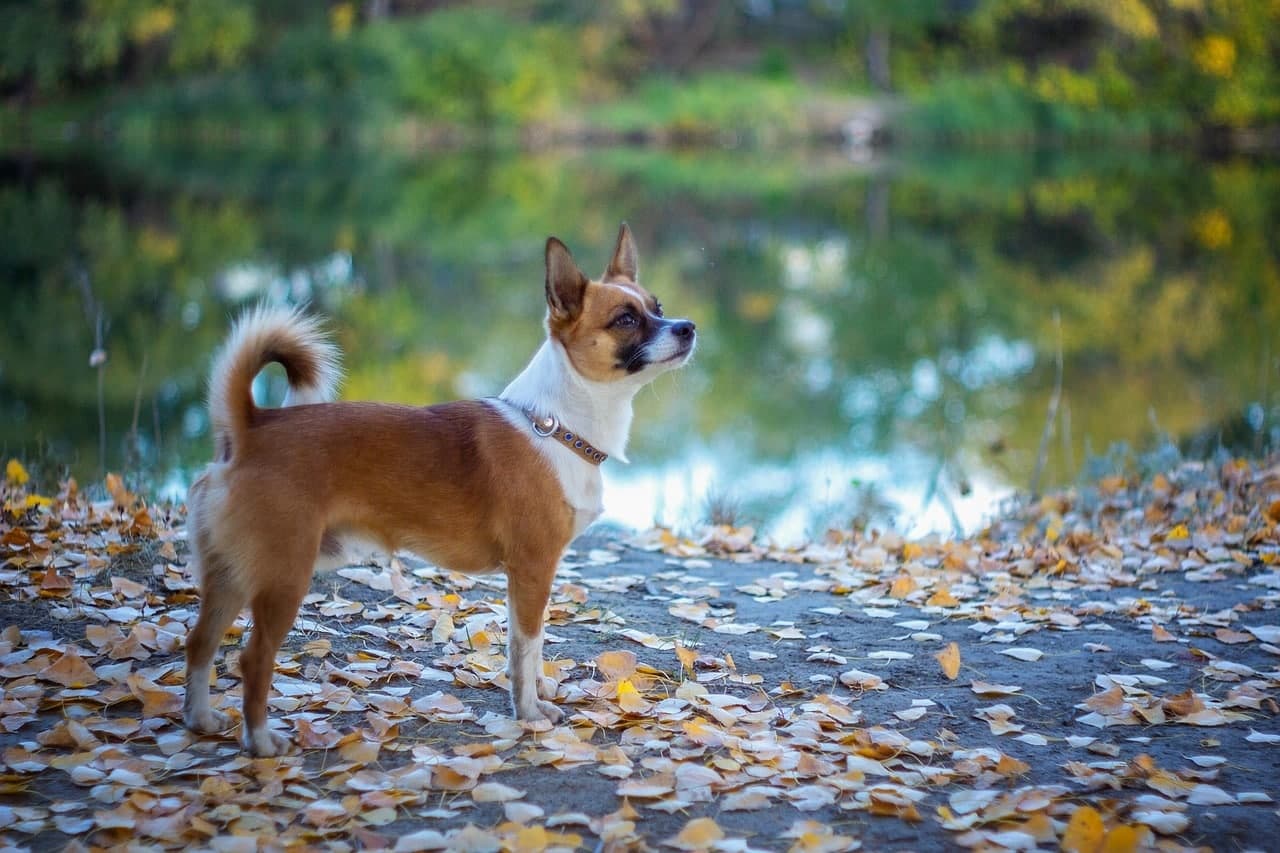
- Origin Country: Norway
- Specialization: hunting
- Containment conditions: apartment, private house
- Lifespan: 12 – 14 years
For more than 400 years, the Lundehund served as a productive working animal for the food-gathering of puffins around the Norwegian coast. These dogs were mainly bred to hunt puffins.
Thankfully, the rare Spitz species, which was on the verge of extinction around World War II, was miraculously saved by Norwegian breeders, and it is still present in very limited numbers today. The playful and lovable Norwegian Lundehund is a wonderful pet for families with active lifestyles.
The only dog breed developed specifically for the task of puffin hunting is the Norwegian Lundehund, which originates from the Veroy (rocky island) in Norway.
Lundehunds initially have the appearance of a complete and robust breed: a spitz with triangular ears, a curved tail, and a thick double coat. Yet a closer examination shows some distinctive qualities.
They have ‘elastic necks’ that can curve back so the head contacts the ears, a spine that folds shut, as well as flexible shoulders that let forelegs stretch to the sides, perpendicular to their bodies. Their feet include at least six toes and extra paw pads. The final abnormality causes the breed’s recognizable “rotary” gait.
New Guinea Singing Dog
- Origin Country: New Guinea
- Specialization: hunting
- Containment conditions: wildlife, nurseries, and zoos
- Lifespan: 12-16 years
The New Guinea Singing Dogs are the rarest dogs of not fully domesticated dogs that lived in the forests of New Guinea more than 6,000 years ago. Outwardly, this ancient breed resembles a secondarily feral dingo dog, only a third smaller. It is characterized by the publication of specific sounds, similar to the singing of humpback whales.
The New Guinea Singing Dog leads a rather secretive lifestyle, so its habits in the wild have not been studied. In captivity, dogs are shy, although quite friendly. Some compare their behavior to that of a cat. But despite close contact with humans, the traits of a wild beast remain dominant.
For the past 50 years, New Guinea singing dogs have lived only in zoos and kennels. The breed suffered from inbreeding (crossing individuals that are closely related) and the blood rush of other types of domestic dogs. There was less and less chance of saving the population. However, individuals similar in DNA were all found.
They turned out to be wild packs of dogs living in the highlands of Papua New Guinea. In the future, their biological material should protect the breed from extinction and preserve a recognizable exterior for posterity. However, breeding work has just begun, and it is too early to talk about the success of the experiment.
Czechoslovakian Wolfdog
- Origin Country: Czechoslovakia (modern Czech Republic)
- Conditions of detention: apartment, private house
- Specialization: service
- Lifespan: 13-16 years
The Czechoslovakian Wolfdog is the most successful variant of crossing a German Shepherd with a wolf, bred for guard duty and special operations. The dog is distinguished by outstanding physical fitness, courage, and devotion to the owner. However, unlike the classic “Germans”, she can make independent decisions and act in stressful situations outside the box.
Today, dog is increasingly being adopted as a pet. And although working specialization does not fade into the background, it is mentioned less and less. For most owners, a wolfdog is a wolf-dog and a childhood dream that has become available for keeping in an ordinary city apartment. Indeed, according to official documents, the breed is not recognized as a wolf-dog hybrid and is not included in the list of potentially dangerous dogs.
The only requirement that is put forward to a potential wolfdog owner is training experience. The dog needs a strong hand and strong motivation to complete the general course – an owner with insufficient preparation simply cannot cope with it.
Chinese Crested
- Origin Country: China
- Conditions of detention: apartment, private house in a region with a warm climate
- Specialization: decorative and companion dog
- Lifespan: 13-18 years
The Chinese Crested is an indoor decorative dog that almost disappeared from the view of breeders in the middle of the last century and was reborn as a cult animal for celebrities and the bohemian elite through the efforts of British breeders.
Today, the Chinese Crested dog is bred all over the world, and it remains rare only in some countries. However, the “Chinese” did not receive unconditional popularity. And all because of the complexity of the content and the specifics of care. Animals need a special microclimate in the house, regular visits to the grooming salon, and a whole wardrobe of warm clothes. Especially if the dog is naked – after all, the crested descended from the Mexican hairless dog and can be born both with long soft hair and completely bald.
The rest of the breed is considered problem-free. Like most decorators, the “Chinese” are attached to the owner and have a light playful character. At the same time, they can boast of a stable psyche. The dogs are positive, sociable and easily adapt to the fast pace of life of the owner: they are ready to travel in a carrier and sit on their laps in a public place.
Leonberger
- Origin Country: Germany
- Containment conditions: private house in a temperate region
- Specialization: companion dog, security dog, the family dog
- Lifespan: 8-9 years
The Leonberger is a wonderful family dog with a formidable appearance and a gentle peaceful disposition.
Representatives of the breed demonstrate enviable endurance, immunity to loud sounds, and balance in stressful situations. Therefore, they easily enter families with small children. Indeed, despite the large size and territoriality characteristic of guard breeds, they remain sensitive and gentle to those who are smaller and weaker.
In matters of training and education, Leonbergers, although not the best, is stable. Dogs are bad at fetching objects, reluctantly go through a general training course, and are ready to work only at their own pace – and it is always slow and relaxed. However, with all the phlegmatic character, animals remain good guards and quickly respond to potential danger.
Of the possible difficulties that you may encounter when buying a puppy of this breed are the high cost of maintenance and poor tolerance to hot climates. The remaining features are not species-specific and are characteristic of all large breeds of dogs without exception.
Thai Ridgeback
- Origin Country: Thailand
- Conditions of detention: apartment, private house in a region with a hot climate
- Specialization: hunting dog, protection dog, pasture dog
- Lifespan: 12-13 years
The Thai Ridgeback is one of the oldest breeds bred without human intervention and has existed for several millennia. Its representatives are distributed in Thailand, Cambodia, Indonesia, and Vietnam. But on other continents, they are almost not represented.
The first mention of ridgebacks in Europe dates back only to the 19th century. But despite the late discovery to the world, the breed is registered by the International Cynological Federation (FCI), which is a plus for those who buy a rare breed puppy for a show career.
The character of the “Thais” is human-oriented. At the same time, the dog can make independent decisions and act outside the box in stressful situations. In the old days, these dogs hunted small game and fed it to their owners, cleaned the house of rats and snakes, and guarded the home against strangers. Today they are faithful companion dogs in any activity, champions in cynological sports, and best friends for all family members.
The dog treats strangers with distrust. It is neutral towards other pets: it easily accepts other dogs and cats in its pack and does not seek dominance.
American Dingo (Carolinian Dog)
- Origin Country: USA
- Conditions of detention: wild, private houses with adjoining territory
- Specialization: hunting
- Lifespan: 10-14 years
The American Dingo is a primitive dog breed bred by natural selection without human intervention. Localized in the southeastern part of America. At the same time, it looks similar to Australian dingoes and primitive dog breeds from Korea. And according to the structure of the bones – on the dogs of the Neolithic period.
Today, the Carolina Dog is considered partly tamed and domesticated by Native American tribes and a group of enthusiastic breeders. The animal does not tolerate cold, preferring hot tropical or dusty dry climates. At the same time, it continues to retain the habits of a wild animal: it does not become attached to one house, it is difficult to train, it requires space and access to free range, and it demonstrates a developed hunting instinct. Getting a Carolina dog is no more dangerous than any domestic one. But problems with obedience begin in early childhood.
Please note that part of the American dingo population remains wild and continues to live near the Savannah River, South Carolina, leading a completely secretive lifestyle. However, the interest of research scientists in representatives of one of the rarest breeds of wild or re-feral dogs continues to this day.
The Carolina Dog is a rare species, not crossed with other breeds. That is, it retained a pure genotype, attractive for study, and made its representatives a kind of exclusive.
Bergamasco Shepherd Dog (bergamasco)
- Origin Country: Italy
- Conditions of detention: private house with constant access to the local area
- Specialization: herding dogs to herd flocks of sheep
- Lifespan: 13-15 years
The Bergamo Sheepdog is one of the most ancient herding breeds in Europe, formed near the Italian Alps more than 1.5 thousand years ago. However, the peak of the development of the species occurred only in the 19th century, either fading away in a series of wars or reviving through the efforts of enthusiastic breeders.
Today, the geography of breeding a dog is limited to its homeland. Whereas for other countries of the world, this breed remains rare and is known mainly among farmers. The Bergamasco Sheepdog continues to be bred exclusively for working qualities. The dog has an impeccable sense of smell, eyesight, and the ability to acutely feel the approaching danger. Owners and breeders assure: “Bergamasco can warn of a predator attack or other unforeseen situation in advance.” For this, the dog is attracted not only to grazing but also to the protection of territories and search and rescue operations.
Biewer Terrier
- Origin Country: Hunsruck, Germany
- Conditions of detention: private house with constant access to the local area
- Specialization:
- Lifespan:
The only thing that matters in life for the Biewer Terrier, an attractive longhaired tricolored toy terrier, is to love & be loved. Even as adults, they retain a pleasant, whimsical demeanor. It is not unusual to carry a few toys along. A small dog breed that is among the newest although equivalent to the Yorkshire terrier dogs, this Biewer Terrier dog is a rare breed different from the Yorkshire terrier.
The Biewer Terrier dog is a devoted, obedient, and outgoing member of the family. The majority of Biewer Terriers are cheerful dogs who smile when asked whether they’re happy. Despite its diminutive size, the Biewer is an extremely tough, athletic dog that excels at vermin hunting.
FINAL WORDS
Hopefully, our list of rare dog breeds helped you get your answer about rare dog breeds. If you know any other rare dog breeds, then please let us know about the breeds in the comment section below.


